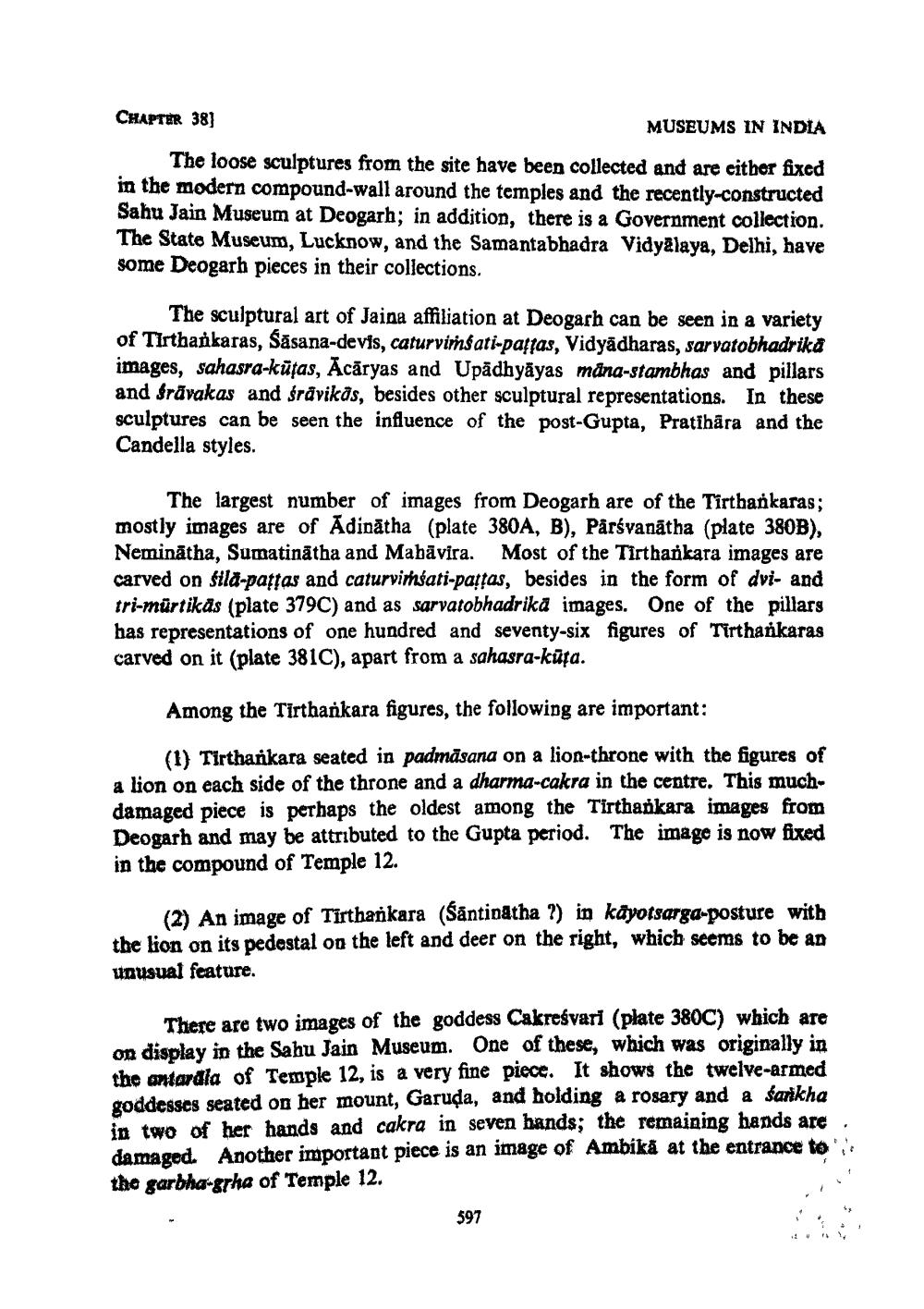________________
CHAPTER 38)
MUSEUMS IN INDIA
The loose sculptures from the site have been collected and are either fixed in the modern compound-wall around the temples and the recently-constructed Sahu Jain Museum at Deogarh; in addition, there is a Government collection. The State Museum, Lucknow, and the Samantabhadra Vidyalaya, Delhi, have some Deogarh pieces in their collections.
The sculptural art of Jaina affiliation at Deogarh can be seen in a variety of Tirthankaras, Sāsana-devis, caturvinnsati-paffas, Vidyadharas, sarvatobhadrika images, sahasra-kūtas, Acāryas and Upādhyāyas måna-stambhas and pillars and frävakas and śråvikas, besides other sculptural representations. In these sculptures can be seen the influence of the post-Gupta, Pratihāra and the Candella styles.
The largest number of images from Deogarh are of the Tirthankaras; mostly images are of Adinātha (plate 380A, B), Pärśvanātha (plate 380B), Neminátha, Sumatinātha and Mabāvira. Most of the Tirtharkara images are carved on sila-pattas and caturvithéati-pattas, besides in the form of dvi- and tri-mürtikas (plate 379C) and as sarvatobhadrika images. One of the pillars has representations of one hundred and seventy-six figures of Tirthankaras carved on it (plate 381C), apart from a sahasra-kūța.
Among the Tirthankara figures, the following are important:
(1) Tirthankara seated in padmāsana on a lion-throne with the figures of a lion on each side of the throne and a dharma-cakra in the centre. This muchdamaged piece is perhaps the oldest among the Tirthankara images from Deogarh and may be attributed to the Gupta period. The image is now fixed in the compound of Temple 12.
(2) An image of Tirtharkara (Santinatha ?) in käyotsarga-posture with the lion on its pedestal on the left and deer on the right, which seems to be an unusual feature.
There are two images of the goddess Cakreśvari (plate 380C) which are on display in the Sahu Jain Museum. One of these, which was originally in the antarala of Temple 12, is a very fine piece. It shows the twelve-armed goddesses seated on her mount, Garuda, and holding a rosary and a sarkha in two of her hands and cakra in seven bands; the remaining hands are damaged. Another important piece is an image of Ambikä at the entrance to the garbha-grha of Temple 12.
597




